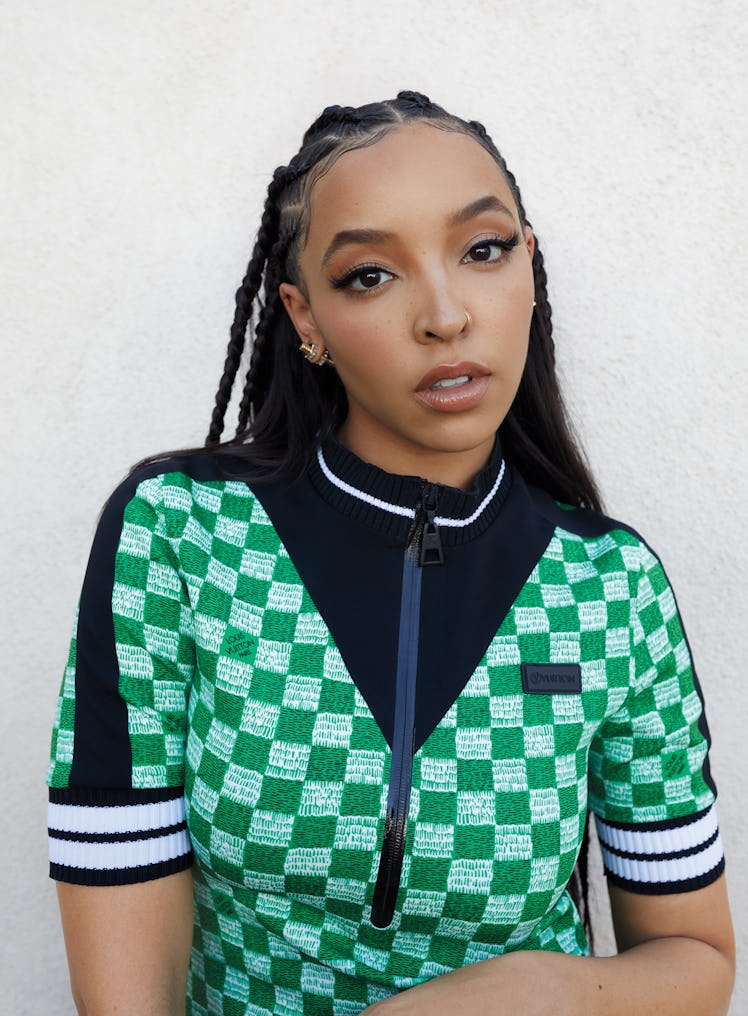Tinashe Won’t Let You Box Her In

Over the past decade, Tinashe has broken through the pop charts, the dance charts, the R&B charts, and the hip-hop charts. Some might call her sound “alternative R&B,” but she sees it as a blend of multiple musical stylings, with inspiration taken from the likes of Janet Jackson and Britney Spears. The musician has had her ups and downs—she signed with the label RCA at 20 years old, and left after feeling like the executives there couldn’t see her vision. She’d go on to release two albums, both of which received critical acclaim, independently from the traditional label structure. Four mixtapes and five studio albums later, the now 29-year-old is finally feeling free enough to call her own shots and defy categorization.
After releasing your first mix tape at 18, you spent seven years at RCA and put out three albums with the label. Since your departure, you’ve independently released two albums, Songs for You and 333. When did you first start writing your own music?
I wrote my first song when I was 5, and it was called “Deep in the Night.” I still remember it, because it was a proper song with a bridge and piano accompaniments. Songwriting was always an outlet for me to express myself, even before anyone heard the songs or I could do anything with them. I would walk around with a cassette tape recorder and record myself freestyling in the backyard.
A lot of the conversation surrounding your work has been about trying to categorize your sound. Is it helpful to try to fit yourself within a genre?
When I was at my last record label, they didn’t necessarily agree on how they should promote me, which radio stations my music should play on. They’d have different teams working for different styles of music, and they’d be like, “Well, should we give this to the pop department? Or do we give this to the urban department?” It never even occurred to me that I would have to choose a genre. I just made the music that I made.
How would you describe your music?
Thinly veiled pop star music, but with other influences. To me, that made perfect sense. But I don’t think people necessarily saw it that way. It then became like, “Oh, she’s confused. She doesn’t have a direction.” Over time, people have gotten more used to the idea that I blend genres and try a lot of different things.
You’ve worked with some very talented producers, like Max Martin, Dev Hynes, and Ryan Hemsworth. What’s the most fulfilling part of collaborating on new work?
My favorite part is when you’re just at the beginning of an album and you don’t really know the direction of it yet. You’re just getting in the studio and experimenting with whoever’s there. The producer will come in and start playing some beats, and I’ll be like, “Play me your weirdest beat,” or “Play me the beat that you don’t think I would want to hear.” Oftentimes, that’s the one that’s exciting to me. It feels like a challenge. Sometimes it works out, and it makes something awesome. Sometimes it doesn’t, but it feels very playful, very much like how music used to feel to me, before I did it as a career.
Burberry bodysuit and pants; Cartier earrings; Tiffany & Co. bracelet; stylist’s own shoes.
When you were first emerging onto the scene, why did you decide to go by your first name?
I always had that in my mind since I was young, because I have such a unique name and it was such a big part of my upbringing. When you grow up with an ethnic name, you’re always going to be the person who has to tell people how to pronounce it, or to advocate for yourself. People will be like, “Can I just call you a nickname?” And you’re like, “Actually, no, this is my name. This is how you say it. Let me teach you. It’s not that hard.” Learning that, and then gaining that pride, was such an important part of growing up.
Where do you see yourself going next?
Now that I’m independent and I’ve been in the game for a decade, I’m really big on saying yes to a lot, and not overthinking things. I’m just trying to get back to that original mindset of, we make art for fun. This is a privilege to be able to make any type of art. In my 30s, I want to have fun being a creative and a mogul. But I’m far from done with my music era. I feel like that’s still on the come up.
Hair by Nina Potts; makeup by Marc Quirmit.
Photo assistants: Jorge Solorzano, Nick Tooman, Chris Whitaker; retouching: D-Touch; fashion assistant: Antonio Soto; hair assistant: Alison DeMoss; makeup assistant: Christina Roberson; set assistant: Kevin Carniero; tailor: Irina Tshartaryan; production assistant: Asher Gardner; special thanks: the Revery LA.